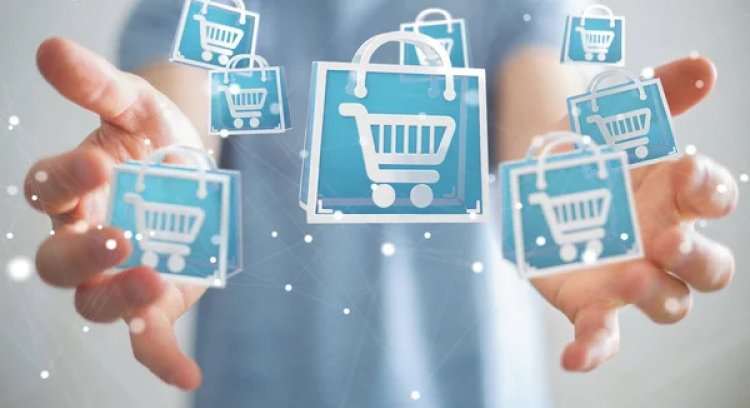The Growth and Future of Ecommerce: Trends and Challenges
Discover the latest trends and challenges facing the rapidly growing e-commerce industry and learn how innovative solutions like Brodox's SaaS platform are helping businesses automate their e-commerce operations for success.

The internet has transformed the way we shop and conduct business, and e-commerce is at the forefront of this change. Ecommerce, often known as electronic commerce, refers to the buying and selling of goods and services over the internet. In recent years, e-commerce has experienced rapid growth, and it is projected to continue expanding in the years to come. In this article, we will explore the trends and challenges facing e-commerce and its future possibilities.
Trends in Ecommerce
The growth of e-commerce can be attributed to several factors, including increased internet penetration, the proliferation of mobile devices, and the rise of social media. According to Statista, global e-commerce sales will reach $6.54 trillion by 2022, up from $3.53 trillion in 2019. Here are some of the key trends driving this growth:
-
Mobile Commerce:
With the rise of smartphones and tablets, mobile commerce (or m-commerce) has become increasingly popular. According to OuterBox, mobile devices now account for more than half of all e-commerce traffic. Retailers are responding to this trend by optimizing their websites and apps for mobile devices and providing a seamless mobile shopping experience. -
Social Commerce:
Social media platforms such as Instagram and Facebook have become popular marketplaces for retailers, with many businesses using social media to sell their products directly to consumers. In fact, a survey by BigCommerce found that 30% of online shoppers have made a purchase through social media. -
Personalization:
Consumers are increasingly expecting a personalized shopping experience, and retailers are responding by using data and analytics to personalize their marketing and product recommendations. For example, Amazon uses customer data to recommend products and offers a personalized homepage based on a customer’s browsing and purchasing history.
Challenges Facing Ecommerce
While e-commerce has experienced tremendous growth, it is not without its challenges. Here are some of the key challenges facing e-commerce today:
-
Cybersecurity:
As e-commerce transactions involve sensitive customer data, cybersecurity is a major concern. Retailers must ensure that their websites and payment systems are secure to prevent data breaches and protect customer information. -
Logistics and Fulfillment:
Ecommerce requires efficient logistics and fulfillment processes to ensure that products are delivered to customers quickly and reliably. Retailers must manage inventory, shipping, and returns while providing a seamless customer experience. -
Competition:
As e-commerce continues to grow, competition is increasing. Large retailers such as Amazon and Walmart dominate the market, making it difficult for smaller businesses to compete. Additionally, the rise of marketplaces such as Etsy and eBay has made it easier for individual sellers to enter the market, further increasing competition.
The Future of Ecommerce
Despite the challenges facing e-commerce, its future prospects look bright. Here are some of the key trends that are expected to shape the future of e-commerce:
-
Voice Commerce:
With the rise of smart speakers such as Amazon’s Alexa and Google Home, voice commerce is expected to become increasingly popular. Customers will be able to use voice commands to place orders and make purchases, further simplifying the shopping experience. -
Artificial Intelligence:
AI is expected to play an increasingly important role in e-commerce, with retailers using machine learning algorithms to personalize product recommendations and improve customer service. Additionally, AI-powered chatbots are expected to become more prevalent, providing customers with 24/7 support. -
Augmented Reality:
With the rise of augmented reality (AR) technology, retailers will be able to provide customers with a more immersive shopping experience. Customers will be able to virtually try on clothes and see how furniture will look in their homes before making a purchase.
In conclusion, e-commerce is a rapidly growing industry that has revolutionized the way we shop and do business. The industry faces challenges such as cybersecurity and competition, but new technologies and strategies are emerging to address these issues. The future of e-commerce looks promising, with the emergence of new trends such as voice commerce, AI, and AR. As technology continues to evolve, it is essential for retailers to keep up with the latest trends and provide a smooth customer experience to remain competitive.
One company that is leading the way in the e-commerce industry is Brodox. Brodox is a SaaS e-commerce platform that automates the e-commerce industry, helping businesses to streamline their processes, increase efficiency, and improve their bottom line. With features such as automated inventory management, order fulfillment, and customer service, Brodox is helping businesses of all sizes to succeed in the highly competitive e-commerce landscape. As the e-commerce industry continues to grow and evolve, Brodox is poised to remain at the forefront of innovation and help businesses to thrive in the digital age.
What's Your Reaction?





































































































